|
War in Paradise
World War II sites in Truk Lagoon, Chuuk, Federated States of Micronesia
Sites
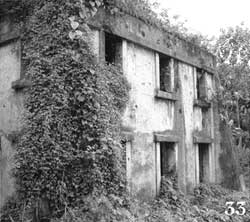 |
33. Power Plant
This is another substantial concrete building that was the location of
the generators for the power used by the seaplane base and ancillary
activities. Other buildings in this area were of timber construction and
only the foundations remain.
|
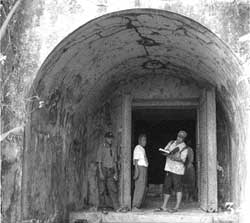 |
34. Aircraft bunker
This is a large rectangular (concrete lined) bunker, about 30 metres x
30 metres x 7 metres in height that is situated in the hills above the
seaplane base that was used to store aircraft and later their munitions.
Chuukese labourers utilising only picks and shovels dug it out over a 12
month period in about 1938/39.
|
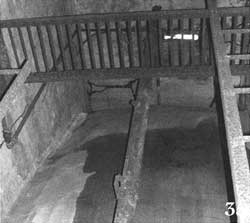 |
35. Underground fuel storage tanks
Two, 650 gallon aviation gasoline tanks were located underground in the
hills above the seaplane base. The gasoline was fed by pipe to the
seaplane base.
|
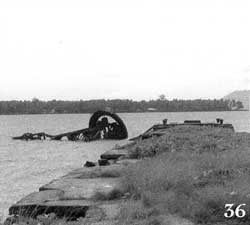 |
36. Kokuso Dock
At the end of this dock is a large crane that was used to handle the
unloading of cargo from the lighters, including boxes containing
aircraft. They were assembled in nearby workshops. The crane was pushed
off its mount after the war during salvage operations.
|
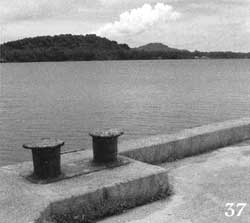 |
37. Main 'Oil' Dock
This dock extended a further 50 metres when it was in operation during
the war. It was used by lighters to refuel the larger Navy and Merchant
ships with oil and gasoline at their various anchorages. It was rebuilt
in about the 1980s to serve Japanese tishing fleets and a
fish processing factory was established here. The dock to the west was
used to supply coal for use by steam vessels. The dock to the east of
the main dock was used to supply water to the ships.
|
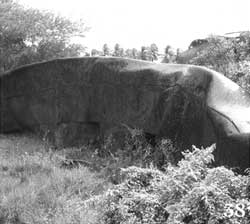 |
38. Fuel Tanks
As would be expected there were many fuel / oil tanks that were required
to fuel ships. The underground 10,000 ton oil tank that was hit during
the bombing, now contains the island water storage. Two other above
ground, riveted, steel plate 10,000 ton fuel tanks (about 50 metres in
diameter and 20 metres in height) are located nearby and one is
considerable buckled from being hit with bombs and the resulting
fires.
|
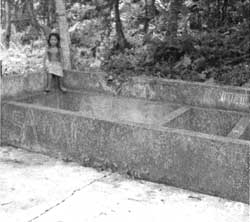 |
39. Navy Supply office and warehouses
Concrete foundation remains for the Navy Supply offices and warehouses.
There is also a boiler and bath associated with a residence for Navy
personnel.
|
Bomb Shelters
A number of small holes can be found all over Tonoas. They were dug as
bomb shelters, and covered with coconut trunks, but found to be of
little protection against the 500 and 1000 pound bombs dropped by the
USA. Larger, better bomb shelters were dug into rock.
Post War Salvage
Considerable salvage of war materials, particularly the non-ferrous
metals took place by someone called 'Domingo' working for a company
called 'Micro' operating out of Palau (Belau), and possibly a second
group of salvagers from China. They bought metals off the Chuukese,
ransacked bunkers and some of the shipwrecks, and recovered the
underwater communications cable that connected many of the islands.

|







